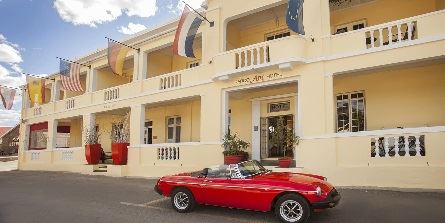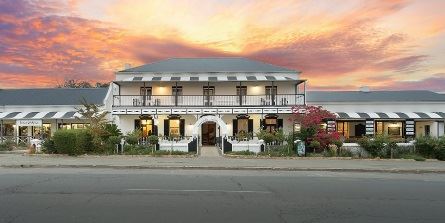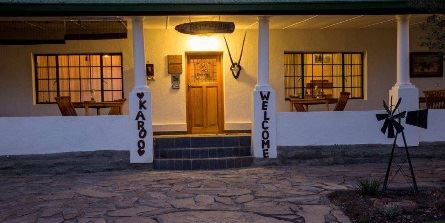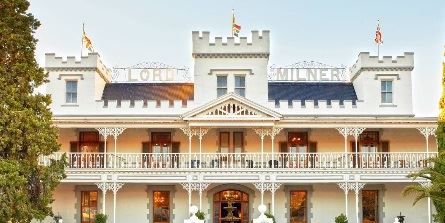The Klein, Great and Central Karoo make up a vast semi-desert region in South Africa’s Western Cape, offering a wealth of activities and accommodation in the region’s historic towns.
Judy Lain, Chief Marketing Officer of Wesgro, says: “The Karoo has yet to be fully discovered by the international market. It’s about digital downtime, open plains and taking stock of the little things that matter.”
When to visit
Collin Thaver, MD of Southern Africa 360, says: “Summers get very hot and winters are rather cold, so the in-between seasons are best in terms of weather.”
The best time to visit depends on the type of person you are, says Annecke de Swart, Reservations Consultant for Karoo Art Hotel, who personally recommends summer as a good time to visit. Shaun Visser from Full Circle Hospitality and Marketing for the Karoo Art Hotel, agrees that the Karoo can be enjoyed all year round. “Summers are hot, but it’s a dry heat.”
During the winter months there is more chance of clear skies, with star-gazing at its best when there is a new moon, or a sliver of the moon to be seen, in the dark skies, says Thaver: “Star-gazing is great because of the clear, dark skies with little light pollution.”
Where to go and what to do
In the Great Karoo there is interesting geology and palaeontology, with the Karoo National Park near Beaufort West offering the Fossil Trail and fossilised footprint tours, in addition to game drives, birding, 4x4 trails, walks, and enjoying the renowned Karoo lamb, explains Thaver.
He suggests taking the Swartberg Pass into the Klein Karoo toward Oudtshoorn, and says the region is “one of the most spectacular mountain passes in the world”.
Visser says the area of Barrydale offers a number of hidden gems and things to do, such as the Warmwaterberg Spa, Tradouw Pass, the Karoo Art Hotel, Barrydale in Bloom, which takes place from October 13 to 14, the Magpie Art Collection and the Karoo Mez Kitchen. Barrydale also produces its own wines from the Barrydale Cellar, expanding the tourism choices to the region; as well as being one of the top pot still brandy producers in South Africa, having competed against, and beaten, a number of international brands.
The Karoo Art Hotel is a quirky country hotel in Barrydale, a farming village in the Klein Karoo, with interesting artwork on every wall in the hotel. It has 15 rooms, each with its own personality and creative twist, featuring balconies and views overlooking the village.

The Karoo Art Hotel.
Aside from the eye-catching artworks, much of which is for sale, the art of winemaking is celebrated with one of the best wine lists in South Africa. It was recently awarded the Diners Club Diamond Award – the only establishment in the Klein Karoo to achieve such an accolade.
A few activities on offer at the Karoo Art Hotel include Buffeljags Foefie Slide at Umshanti in Swellendam, a platform 45 metres above the Buffeljags Dam where guests slide off a 220-metre slide. It is only 40 minutes from the hotel. Grootvadersbosch Nature Reserve, a World Heritage Site 35 kilometres from Barrydale, offers easy to moderate day time trails, such as the Bushbuck Trail and the Grysboksirkel and picnic and bush drives are available at Kwetu Guest Farm, 11 kilometres from Swellendam.
Within easy reach of the famous Warmwaterberg hot water springs, and in the heart of the Cape’s longest wine route, the Klein Karoo Art Hotel is perfect stop-over on a road trip via the scenic Route 62 between Cape Town and the Garden Route, and an ideal peaceful bolthole away from the city.
Thaver further suggests Prince Albert, which he describes as an interesting little town with lots of character. He says there is so much for tourists to do in the area, including hiking in the Swartberg Mountains, art, food and wine, star-gazing, and ghost walks. “It’s a nice stopover town with pretty scenery.”
African Relish, a recreational cooking school based in Prince Albert, prides itself on being a pioneer of culinary travel in the Karoo region.
The school is a short drive over the Swartberg Pass from the Garden Route, or a few hours from Cape Town, and offers travellers a selection of culinary experiences, either through cooking classes or town tours.
Other activities in the town include cycling in the Swartberg Pass, wine or olive tastings, visits to the dairy or fig farm, the Foraging Tour, the Ghost Walk, botanical walk or Foodie Tour of the town – all providing guests with an authentic Karoo experience.
Another suggestion of Thaver’s is Aquila Nature Reserve in the Southern Karoo – 12 kilometres from the town of Touws River – and Matjiesfontein, a settlement in Central Karoo District Municipality. “A little town (Matjiesfontein) frozen in time, life here is a tribute to the early Karoo, the Anglo-Boer War, and Queen Victoria’s England,” adds Thaver.
Southern Africa 360 offers a three-day The Great Karoo Explorer Tour, combining safaris, culture and star-gazing, with a morning safari at Aquila Game Reserve, a Donkey Cart Cultural Tour, star-gazing, and an Olive Farm Tour in Prince Albert.

The Swartberg Hotel. Credits: Extraordinary.
Accommodation on The Great Karoo Explorer Tour includes the Swartberg Hotel, a charming Victorian-style hotel set in the heart of Prince Albert, and one of 19 National Monuments in the town; as well as Olive Grove Guest Farm, which is set on a working olive, sheep and game farm on the outskirts of Beaufort West and surrounded by the Great Karoo landscape. “You can expect country comfort, warm Karoo hospitality and delicious home-style traditional Karoo meals, with dinners and breakfasts being served on the verandah overlooking the olive orchards,” explains Thaver.

Credits: Olive Grove Guest Farm.
Matjiesfontein, home to the famed Lord Milner Hotel, is a small yet vibrant village in the Western Cape’s Central Karoo region. Most of the buildings in Matjiesfontein were established in the late 1800s, with the Milner Hotel being completed during the time of the Anglo-Boer War, by James Logan in 1899. The hotel was also used as a Field Hospital during this time.
In 1968, David Rawdon, the hotelier par excellence, whose claim to fame includes establishing Rawdons Hotel at Nottingham Road in Kwazulu Natal and other well-known establishments – such as Lanzerac Hotel, The Drostdy, and more – purchased Matjiesfontein Village. In his efforts to save Matjiesfontein from demolition, extensive renovations were done. Rawdon reopened the hotel in 1970, renaming it The Lord Milner Hotel.

The Lord Milner Hotel.
The Matjiesfontein Bucket List, provided by The Lord Milner Hotel, includes mountain biking; tennis with a view; swimming in The Lord Milner pool; the Red Bus Tour; a visit to Laird’s Arms Pub Matjiesfontein; the town’s coffee shop, which takes visitors a step back in time, with waitresses dressed in traditional Victorian attire; star-gazing; the Transport Museum, which houses a beautiful collection of vintage cars that date back to the 1930s through to 1960s; and the Marie Rawdon Museum, which showcases the world’s largest collection of private artefacts and memorabilia from the Anglo-Boer War.
Part of Matjiesfontein’s uniqueness is that the entire village is privately owned – a novel concept for those wishing to ‘rent a village’ to host functions, much in the same way some people rent islands.
Access
The best way to access and experience the Karoo is by road, says Thaver, suggesting the N1 from Cape Town, or down to Cape Town from Johannesburg.
The most popular way to access the Karoo is definitely self-drive, he says, as there are not many group trips that cover the region extensively: “The Central Karoo is not an ideal destination for solo travelers, as it is best accessed with a self-drive trip; however interesting for families.”
De Swart reiterates: “Self-drive I would say because then you can stop wherever you like. This also depends on the type of person you are.”






















